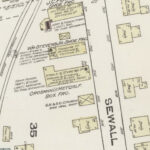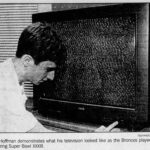In my humble opinion, if you are going to live on the coast, you should eat seafood. Especially living in a place like Marblehead, how could you not learn to appreciate fish? Sure, it can be a little slimy and its smell might be off-putting, but fishing is such a large part of Marblehead’s history, I think it is worth a second taste.
Marblehead’s fishing history stretches back to the earliest days of the town itself. On Dec. 12, 1648, Salem granted Marblehead independence. By Dec. 22, in what is thought to be the earliest recorded meeting, Marbleheaders were putting forth new rules for their new town — including one about fishing.
The agreement stated “that all such as are strangers fishing or employed about fish, shall pay unto the Towne for their wood and flake stufe and other conveniences, the sum of ten shillings a year for every man.”
Fishing became a titular quality of the young town. In 1660, the King’s agents called Marblehead the “greatest Towne for fishing in New England.” Though the fishing industry was growing in Marblehead, it was not without its hardships.
In the 1730s, after a suspected smallpox outbreak that effectively halted all business, the “legislature” imposed a six-pence-per-month tax on fishermen. An uproar followed.
However, thanks to the daring Benjamin Boden —who refused to pay the tax —a town meeting was called. There, the town declared the tax unjust and it was removed.
In 1808, the United States put an embargo on American exports, forcing boats and ships to travel back to the U.S. and remain in port. Marblehead, with a population of about 6,000-7,000, felt this embargo deeply. Much of the town relied on fishing for income and now had no one to whom they could sell. Nevertheless, the town stood patriotically behind the federal government.
The fishing industry was not just something economic or political to be regulated with fees and taxes — it was also something that revolved around people. Before there were farm-raised fish, motorized boats, and chain grocery stores, there were people out on schooners and ketches fishing with rods and sometimes nets.
There were also people on land who relied on the fishing industry.
At the corner of Front Street and State Street was Lecraw’s Fish Market. In the “Brevities” section of the Sept. 27, 1895 Marblehead Messenger, it states that William Lecraw started a fish route. In early March 1896, he purchased a new house for his fish business.
It seems, however, that Lecraw was not just in the business of selling fish. In the July 12, 1898 paper, the writer reported that Capt. George Douglass caught the first bass of the year and the largest to date, weighing in at 47 and a half pounds, which Lecraw briefly exhibited the bass at his shop. May 1906 brought another oddity — a strange blue lobster.
The report claims “it was caught by Mr. Augustus Roundy. … It is of a bright blue color, without mottle or shading of black or red, of medium size, and in possession of vigorous life.”
At some point later in his life, Lecraw worked in Lynn for the J.B. Blood Co. and then at an unnamed business in Manchester, New Hampshire. Before his death, he relocated to Raymond, New Hampshire and ran another fish business there until falling ill. He died in his Raymond home during the week of Dec. 28, 1931.
So there — that is my pitch to those of you who turn up your nose (or hold it closed) at a plate of fish. Perhaps after reading this, you may be a bit more likely to partake in the centuries-old history of seafood — massive bass and all.



